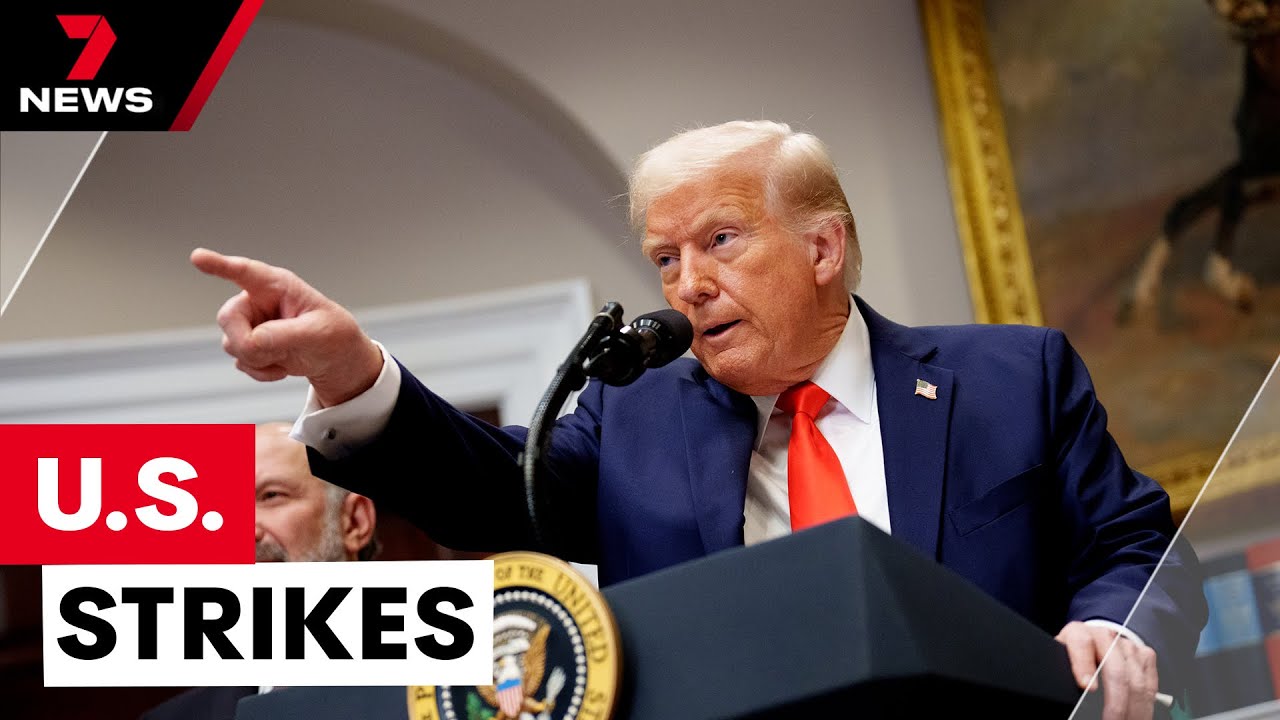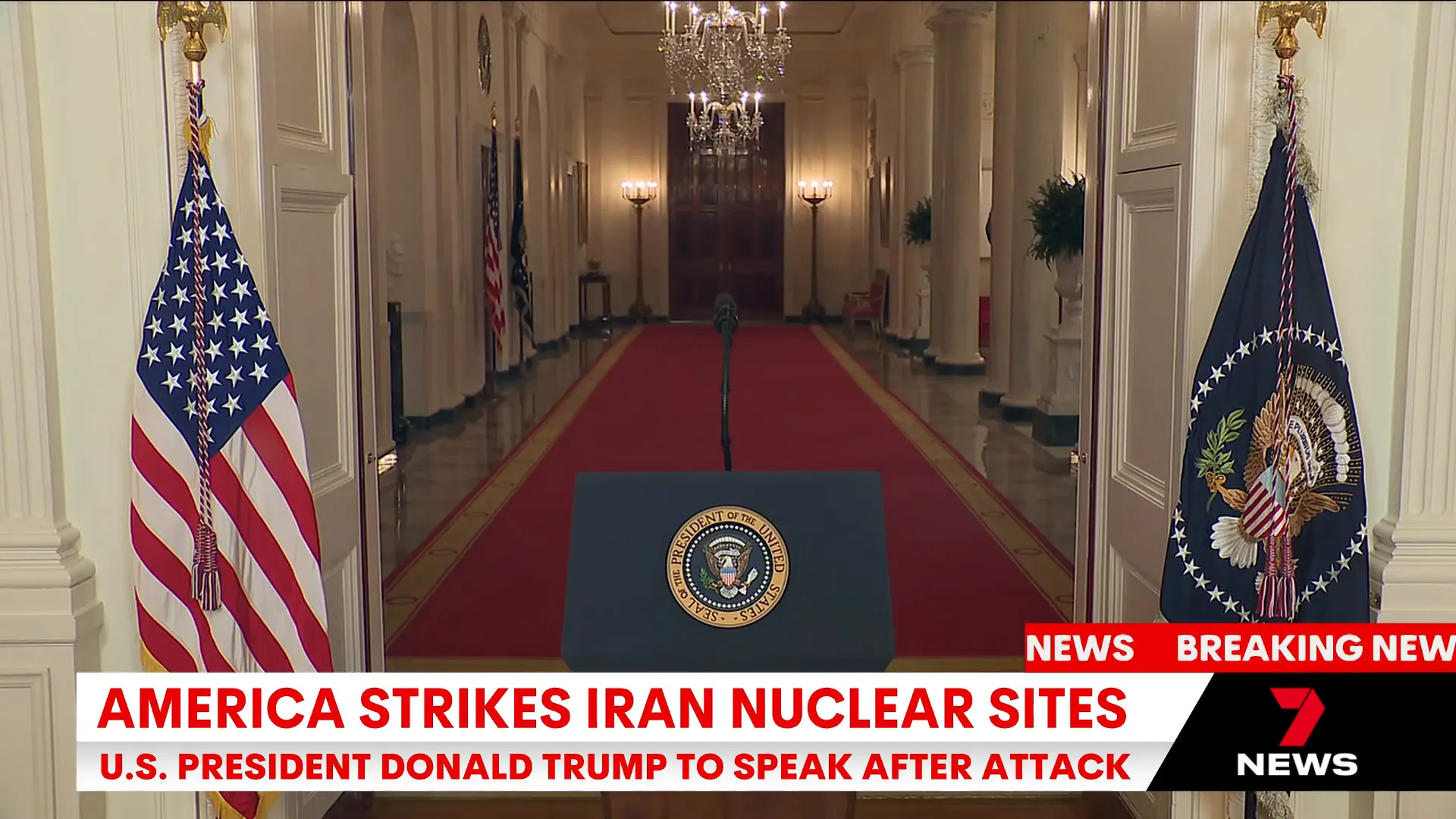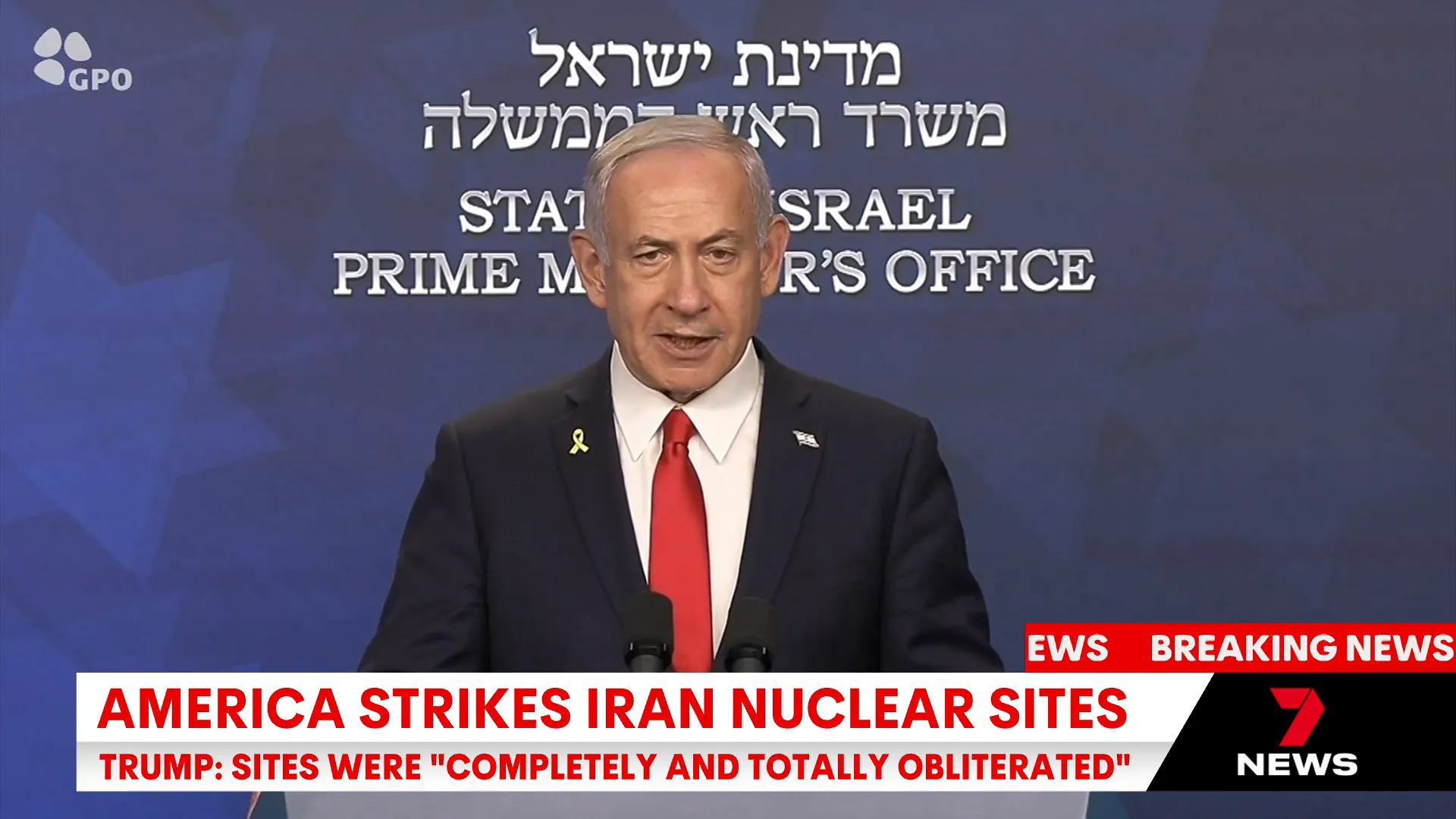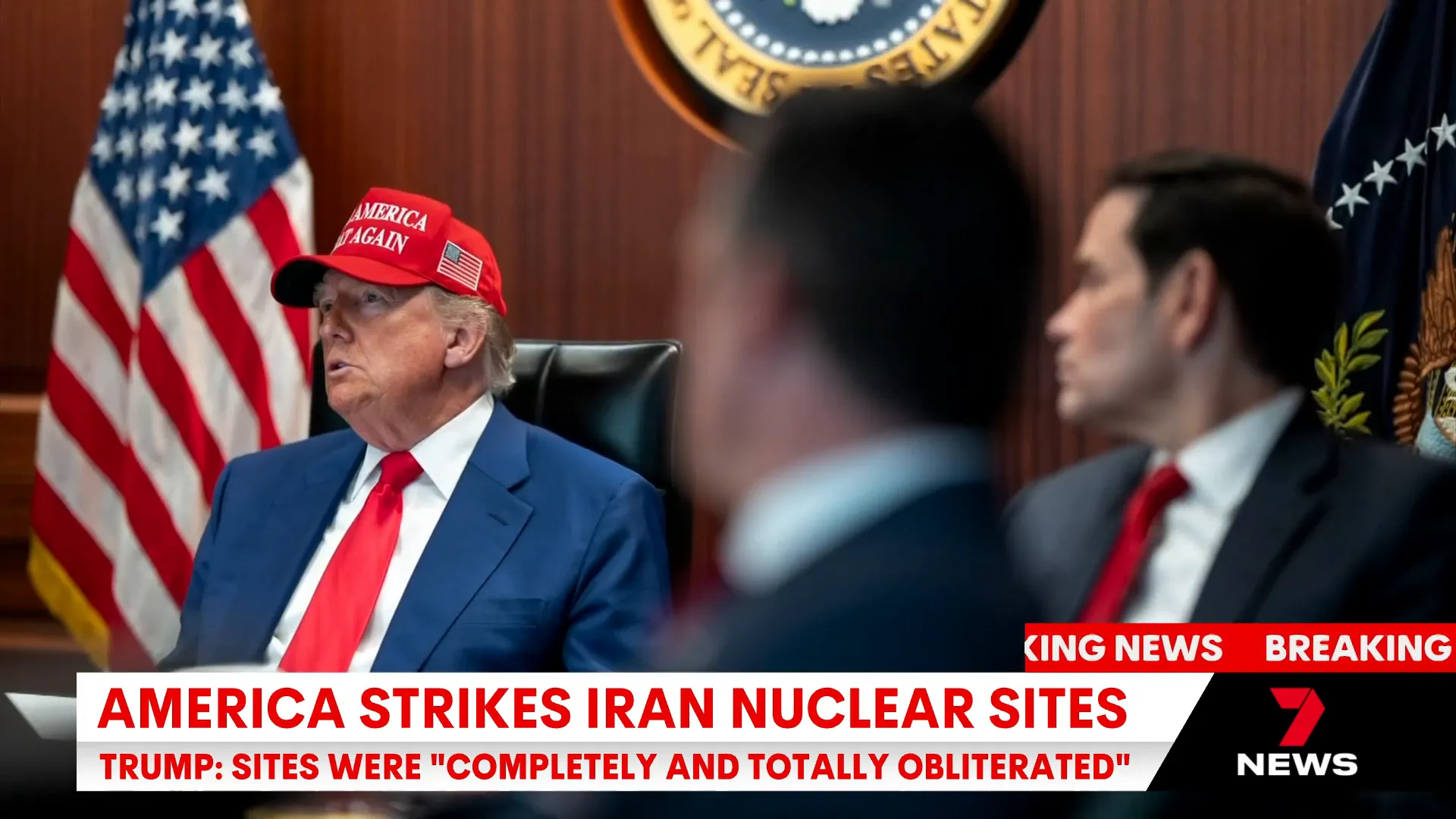Jun 22, 2025
America Strikes Iran Nuclear Sites

In a significant and unprecedented military operation, the United States has launched massive precision strikes on three key nuclear facilities in Iran. This decisive action was confirmed by President Donald Trump, who addressed the nation from the White House to announce the obliteration of Iran's nuclear enrichment capabilities. This article explores the details of the strikes, the strategic implications, and the reactions from global leaders and experts.
Table of Contents
- The Targets: Fordow, Natanz, and Isfahan
- The Military Operation: Precision and Power
- President Trump's Address: Peace Through Strength
- International and Regional Reactions
- The Diplomatic Dilemma: Peace or Further Conflict?
- Implications for Australia and the Global Community
- Questions and Controversies
- Conclusion: A Defining Moment in Middle East Security
- Frequently Asked Questions (FAQ)
The Targets: Fordow, Natanz, and Isfahan
The U.S. military targeted three primary nuclear sites believed to be central to Iran's nuclear weapons program: Fordow, Natanz, and Isfahan. Fordow, located just outside Tehran, was the most challenging target due to its location deep inside mountainous terrain—approximately 18 to 90 meters underground. It serves as a nuclear enrichment site, making it a critical facility in Iran's nuclear ambitions.
Isfahan is reportedly where Iran converts nuclear-grade uranium into weapons-grade uranium, a crucial step in developing nuclear weapons. Natanz, another enrichment site, has long been associated with Iran’s nuclear development efforts. The destruction of these sites represents a severe blow to Iran's nuclear program.
The Military Operation: Precision and Power
President Trump revealed that the strikes were carried out using at least three B-2 stealth bombers, unique to the U.S. Air Force, capable of delivering massive ordinance bunker-buster bombs. These bombs, measuring approximately six meters in length, are designed to penetrate deep underground—up to 60 meters—before detonating, ensuring the destruction of heavily fortified underground facilities.
In addition to the bombers, around thirty Tomahawk missiles were reportedly launched, possibly from aircraft carriers or submarines in the region. The operation was described by President Trump as a “spectacular military success” that completely obliterated Iran’s key nuclear enrichment sites.

President Trump's Address: Peace Through Strength
In his nation address, President Trump emphasized the necessity of the strikes, citing Iran as the “world’s number one state sponsor of terror” and accusing the regime of causing death and destruction across the Middle East for decades. He said:
"Iran, the bully of the Middle East, must now make peace. If they do not, future attacks will be far greater and a lot easier."
Trump praised the cooperation with Israeli Prime Minister Benjamin Netanyahu, calling their partnership “like no team has ever worked before” in erasing the nuclear threat to Israel. He congratulated the American military personnel involved and expressed hope that their services would no longer be required in this capacity, signaling a preference for a peaceful resolution moving forward.
International and Regional Reactions
Israel’s Response
Israeli Prime Minister Benjamin Netanyahu released a video statement applauding President Trump’s bold action, calling it a historic pivot that could lead to peace and prosperity in the Middle East. Netanyahu highlighted the strength of the U.S. military and reiterated the mantra of “peace through strength,” acknowledging that first comes strength, then comes peace.

Heightened Security in Israel
In the wake of the strikes, Israel has escalated its security measures. Schools remain closed, workplaces are restricted, and large gatherings are prohibited as the nation braces for inevitable retaliation. Israeli authorities have warned citizens to stay alert amid threats broadcast by Iranian state media, which labeled every American citizen and military personnel in the region as potential targets.
Despite a recent lull in missile attacks from Iran, the situation remains tense, with Israel maintaining air dominance over Iranian airspace, complicating any retaliatory efforts by Tehran.
U.S. Military Preparedness and Troop Safety
The U.S. has approximately 40,000 troops stationed across the Middle East, including bases in Saudi Arabia, UAE, Turkey, Qatar, Bahrain, and Oman. In anticipation of possible Iranian retaliation, the U.S. has bolstered its military presence and logistical support, including increased blood supplies for potential casualties.
The safety of these troops now becomes a critical concern as Iran’s response remains uncertain.
The Diplomatic Dilemma: Peace or Further Conflict?
President Trump framed the strikes as a move to force Iran into the diplomatic arena, stating the choice is now “peace or tragedy” for the Iranian regime. However, recent diplomatic efforts have been fraught. Talks in Geneva with European foreign ministers failed to make progress as Iran insisted that negotiations would not continue unless Israel ceased its attacks.
Iran’s Foreign Minister, who was in Turkey at the time of the strikes, warned of a “very, very dangerous situation” should the U.S. escalate its involvement. Meanwhile, the Iranian government has claimed there is no radiation fallout from the attacks, although the full extent of damage remains to be confirmed.
Implications for Australia and the Global Community
Australia faces pressing concerns regarding its citizens in the conflict zone, with over 3,800 Australians seeking assistance to leave the Middle East. Australian C-17 Globemaster aircraft have been repositioned to facilitate potential evacuations, though heightened tensions and restricted airspace complicate these efforts.
Security experts emphasize the uncertainty surrounding Iran’s capacity to retaliate effectively. Australia, as a close U.S. ally, must assess its position carefully amid escalating tensions.
The United Nations Secretary-General António Guterres warned of the risk of rapid escalation with catastrophic consequences for civilians and the wider region. Meanwhile, a NATO summit in The Hague looms as a critical platform for Western leaders to deliberate on the future course of action—whether to push for the complete dismantling of Iran’s nuclear program or pursue regime change, a position strongly advocated by Netanyahu.
Questions and Controversies
- Was the intelligence underpinning the strikes accurate and reliable?
- Could Iran’s nuclear weapons capability have been overstated?
- What will be the long-term geopolitical consequences of this military action?
Recent reports indicate that the Director of National Intelligence had previously informed U.S. Congress that Iran was not capable of developing a nuclear weapon, a view that President Trump has publicly challenged, leading to internal divisions within U.S. intelligence circles.
Conclusion: A Defining Moment in Middle East Security
The U.S. strikes on Iran’s nuclear facilities mark a pivotal moment in the Middle East’s volatile landscape. With President Trump’s emphasis on strength preceding peace, the world watches closely to see whether this military action will lead to diplomatic breakthroughs or further conflict.
As global powers prepare for critical discussions at upcoming summits, the safety of regional populations, foreign nationals, and military personnel remains paramount. The unfolding events will undoubtedly shape international relations and security policies for years to come.

Frequently Asked Questions (FAQ)
What were the targets of the U.S. strikes in Iran?
The strikes targeted three nuclear enrichment facilities: Fordow, Natanz, and Isfahan, which are central to Iran’s nuclear weapons program.
How were the strikes carried out?
The U.S. used B-2 stealth bombers equipped with bunker-buster bombs capable of penetrating deep underground facilities, along with Tomahawk missiles launched from naval platforms.
What was President Trump’s stated objective?
To destroy Iran’s nuclear enrichment capacity and stop the nuclear threat posed by Iran, which he labeled the world’s leading state sponsor of terror.
What has been the international reaction?
Israel strongly supported the strikes, viewing them as historic and necessary. The United Nations has expressed concern about escalation, and diplomatic efforts continue amid rising tensions.
What are the risks of retaliation?
Iran may retaliate against U.S. forces and allies in the region, putting thousands of troops at risk and potentially destabilizing the Middle East further.
How is Australia responding?
Australia is focused on the safety of its citizens in the region and monitoring the situation closely, with plans for potential evacuations and government officials preparing to respond to developments.